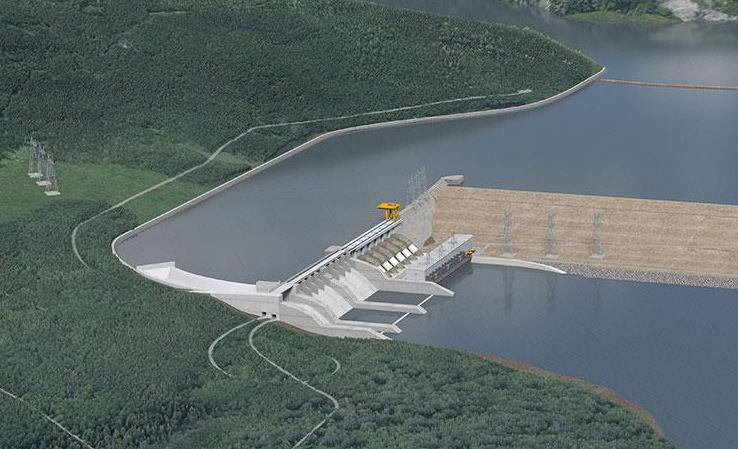Site C: a precedent setting project?

 It has been just over one year since construction began on the Site C hydroelectric dam and generating station in northeast British Columbia. Recently, the project was granted two key permits that not only allow the mega project to proceed, they demonstrate the Liberal Government’s support of the project. This has come as a bit of surprise to some who expected that First Nations and environmentalists might have the power to stall or even stop construction of the dam.
It has been just over one year since construction began on the Site C hydroelectric dam and generating station in northeast British Columbia. Recently, the project was granted two key permits that not only allow the mega project to proceed, they demonstrate the Liberal Government’s support of the project. This has come as a bit of surprise to some who expected that First Nations and environmentalists might have the power to stall or even stop construction of the dam.
Like any large resource project, it has its opponents. Construction of the dam will flood an 80 km long valley. In July, hundreds of protesters gathered in a Vancouver park. A protest group, Fight C, said that not only does the dam infringe of First Nations’ rights, it is a waste of tax payer money. Until the valley is flooded some protesters feel that it is not too late to put on the brakes.
In contrast, also in July, the Liberal Government granted two crucial federal permits for Site C. The permits were issued by the Department of Fisheries and Oceans and Transport Canada. This angered many opposed to the project as they felt that, in the light of recent court rulings and Trudeau’s very public support for First Nations and the protection of the environment, he and the courts might be on their side.
According to an August 3, Global News article What Trudeau’s Site C decision could mean for future energy projects, by Keith Baldrey, “The Trudeau government is already feeling a backlash from environmentalists and some First Nations, who are furious he has given the green light to a project they vehemently oppose. Words like ‘betrayal’ and ‘cowardly’ are now being bandied about by various groups who apparently had convinced themselves that Trudeau was going to shut down any economic development that had even the slightest amount of opposition from some First Nations.”
On the other hand, the project, according to a province wide Abacus Data poll, has the support of a large majority of BC residents.
- Awareness of the Site C project has reached a new high of 77% across the province and is stable at 90% in the north/northeast region.
- Across the province 73% either support Site C (49%) or can support it under certain circumstances (24%), while 25% oppose the project.
- In the north/northeast region of the province, 69% of those surveyed either support building Site C (47%) or can accept it under certain circumstances (22%), while 26% oppose the project.
Construction continues at the project despite the controversy surrounding it. So, just what has been accomplished since construction of the project began a year ago? A recent update by the Office of the Premier, Christy Clark, included a list of highlights that illustrate the scope of the project.
 Key highlights of the first year of Site C construction include:
 The project surpassed 1,000 B.C. workers in May 2016. The latest job figures show 1,223 British Columbians working on the project – that’s 79% of the current workforce (1,547).
- Over 200 B.C. companies have been involved in Site C construction, either as contractors, sub-contractors or suppliers.
- 1,200 rooms and key amenities are now available for Site C construction workers after completing the first two phases of the worker accommodation lodge – that’s 75% of the 1,600 rooms required.
- Approximately 2.5 million cubic metres of material has been excavated and relocated on the north bank of the dam site. That’s enough material to fill about 1,000 Olympic-size swimming pools.
- Over 900 hectares of land has been cleared as part of site preparation work. That’s roughly the size of 850 baseball fields.
- More than 65,000 cubic metres of timber has been delivered to local mills in Fort St. John for processing.
- The 329-metre Peace River construction bridge was completed on time and on budget in March 2016, linking the north and south banks of the dam site.
- Public road improvements to 240 Road (1.6 km) and 269 Road (0.9 km) are substantially complete, with upgrades to Old Fort Road (5.6 km) and 271 Road (3.0 km) underway.
- The main civil works contractor, Peace River Hydro Partners, mobilized to site in spring of this year and started physical work in June.
- To date, BC Hydro has signed contracts and made financial commitments of more than $4 billion.
It is expected that once construction is complete, in 2024, the dam will provide electricity for more than 100 years.
